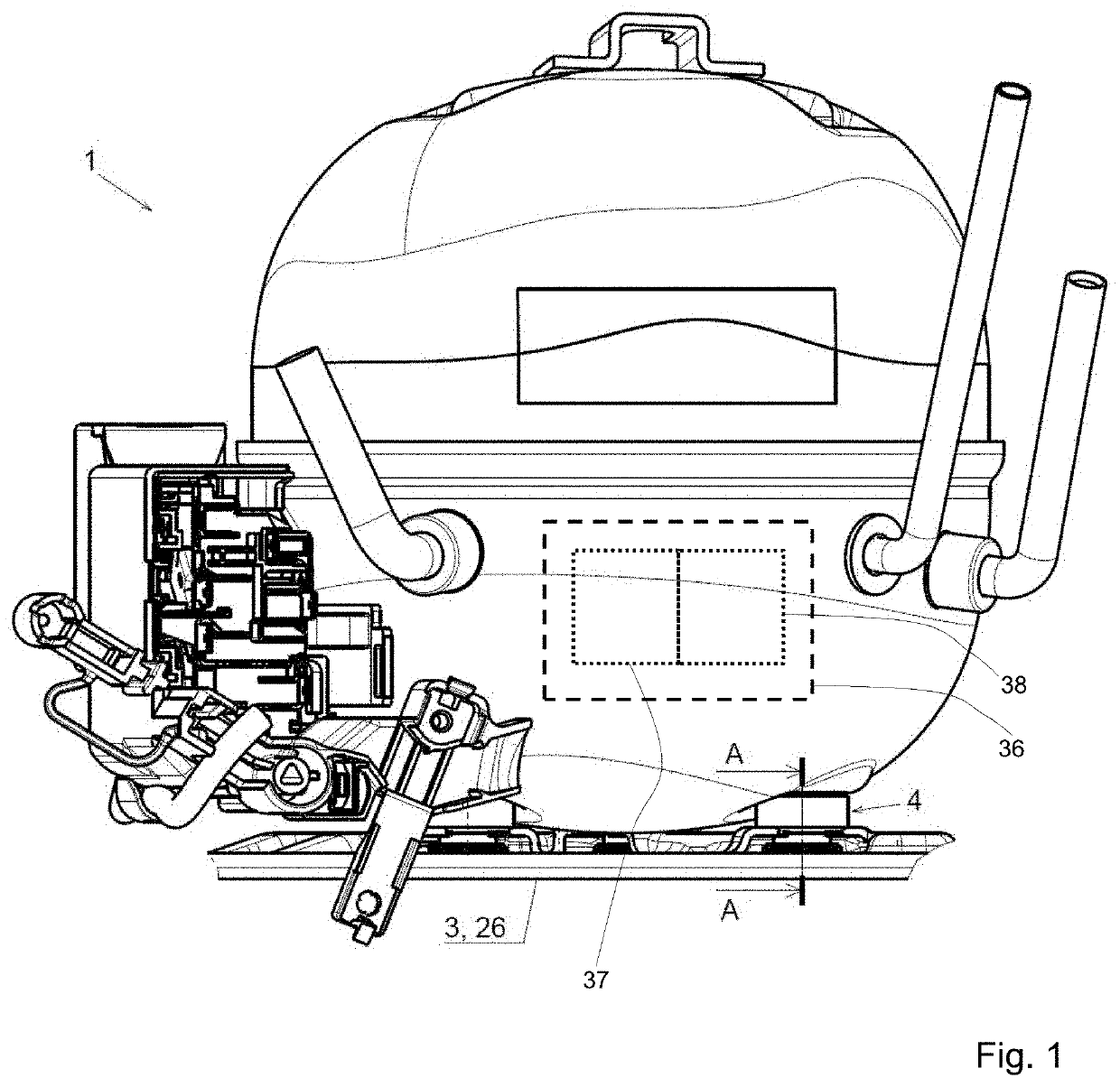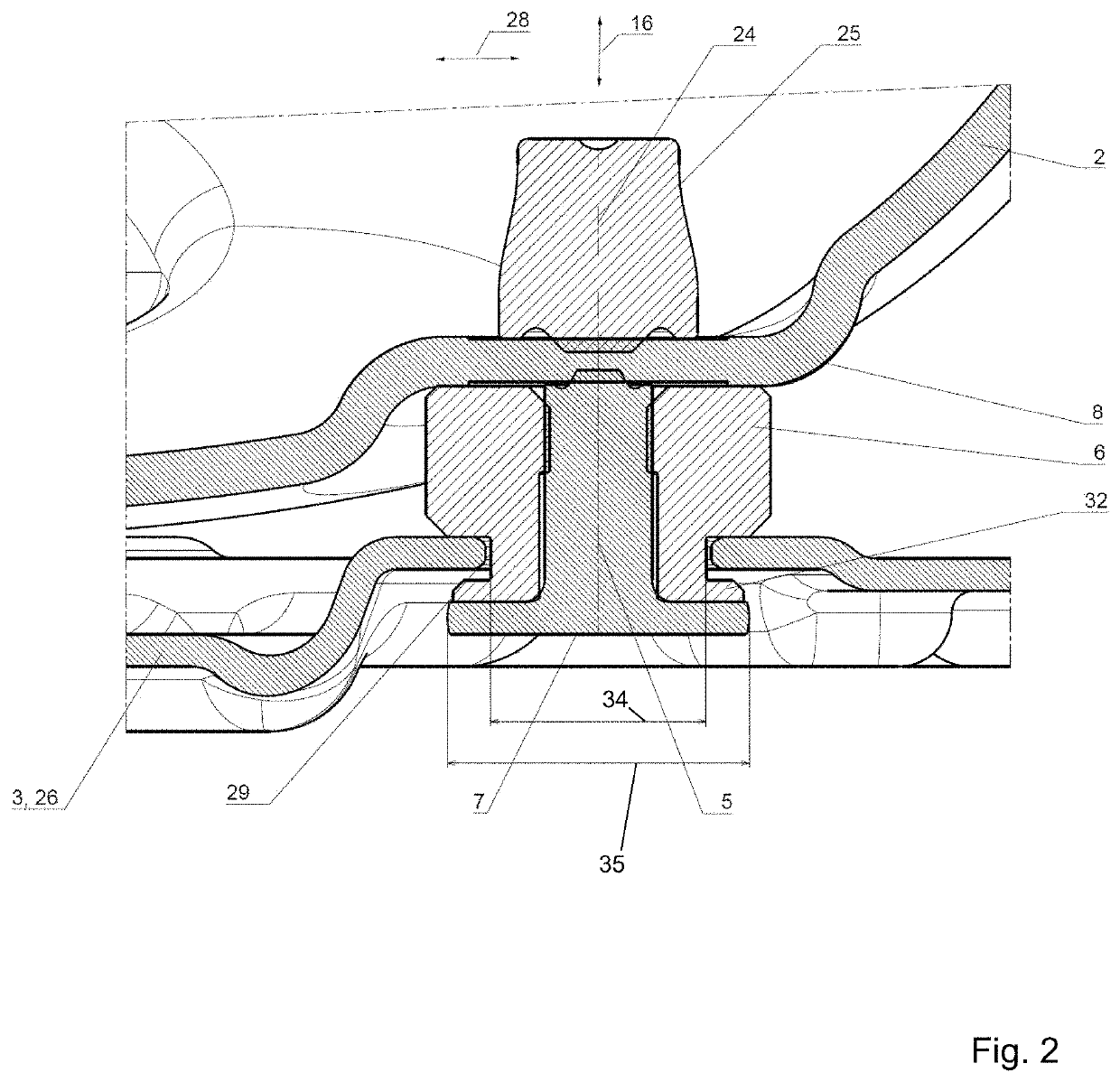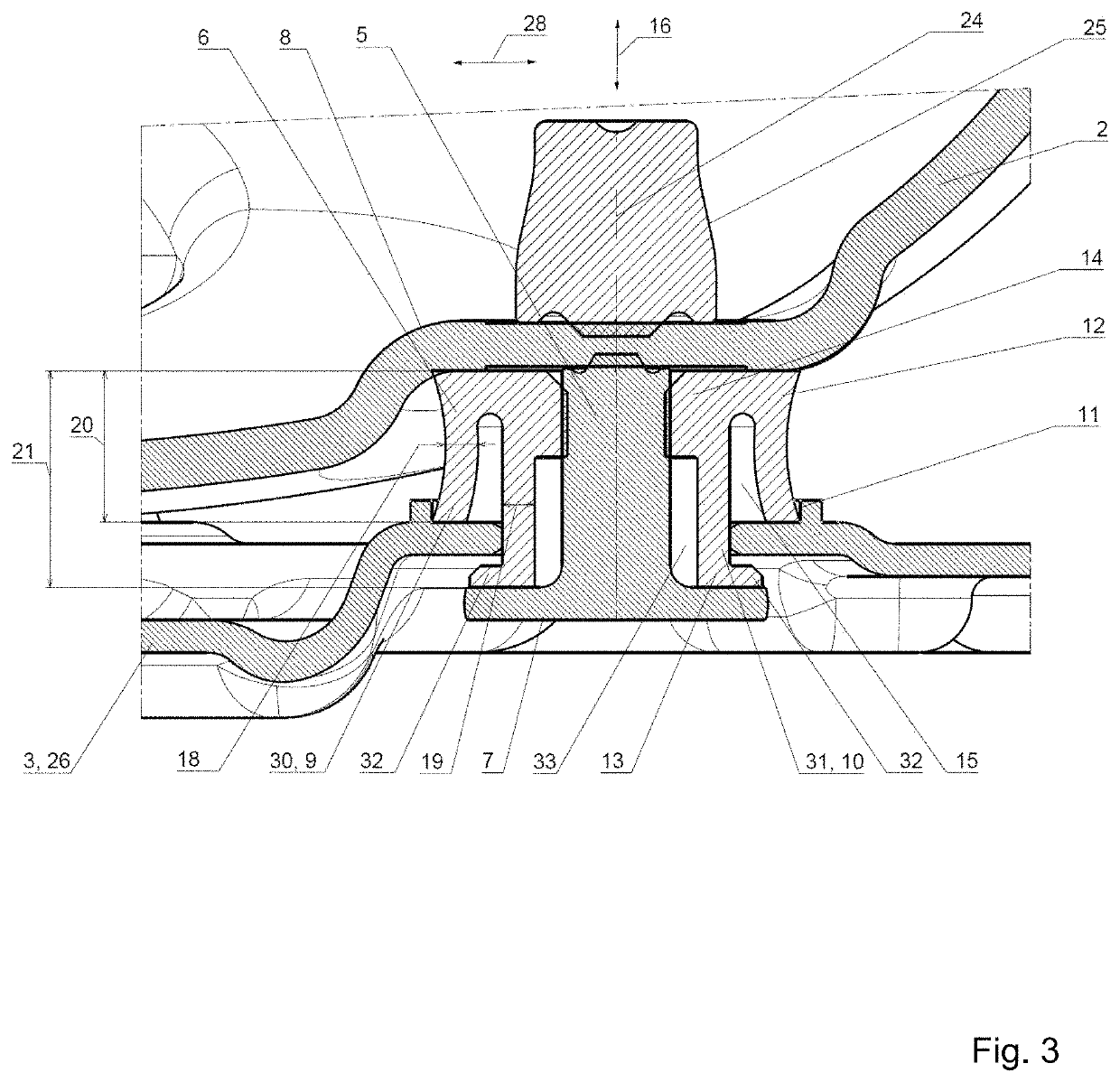Connection component of a refrigerant compressor
a technology of connecting components and compressors, which is applied in the field of connecting components of refrigerant compressors, can solve the problems of inability to achieve sufficiently good vibrational decoupling, usually rubber, and inability to decouple. the effect of vibrational decoupling
- Summary
- Abstract
- Description
- Claims
- Application Information
AI Technical Summary
Benefits of technology
Problems solved by technology
Method used
Image
Examples
Embodiment Construction
[0044]In the side view in FIG. 1 one can see a refrigerant compressor 1 with a housing 2, where within the housing 2 there is a drive unit 36 with a piston-cylinder unit 37 for cyclic compression of a refrigerant and an electric motor 38 to drive the piston-cylinder unit 37. The housing 2 in FIG. 1 is connected via connection components 4 according to the prior art with a mounting panel 26 of a refrigerator 3, which is in operative interaction with the refrigerant compressor 1.
[0045]As can be seen in the sectional view in FIG. 2, the connection components 4 according to the prior art have an inner element 5 and an outer element 6 that surrounds the inner element 5. The outer element 6 is typically made of rubber. The inner element 5 in any case has a greater stiffness than the outer element 6, which counteracts a settling of the outer element 6.
[0046]The connection element 4 has a lengthwise axis 24, which runs parallel to an axial direction 16. A transverse direction 28 stands acro...
PUM
 Login to View More
Login to View More Abstract
Description
Claims
Application Information
 Login to View More
Login to View More - R&D
- Intellectual Property
- Life Sciences
- Materials
- Tech Scout
- Unparalleled Data Quality
- Higher Quality Content
- 60% Fewer Hallucinations
Browse by: Latest US Patents, China's latest patents, Technical Efficacy Thesaurus, Application Domain, Technology Topic, Popular Technical Reports.
© 2025 PatSnap. All rights reserved.Legal|Privacy policy|Modern Slavery Act Transparency Statement|Sitemap|About US| Contact US: help@patsnap.com



